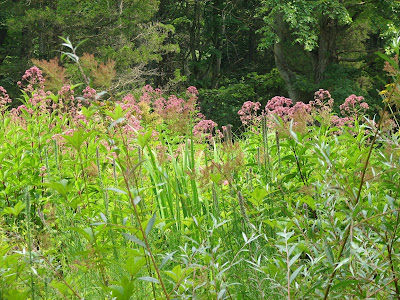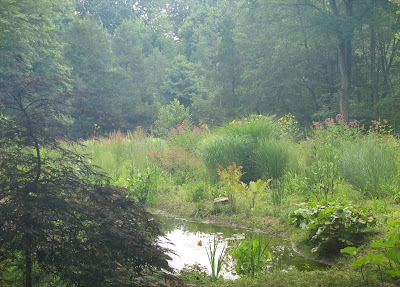
The weeks are flying by and the garden is changing quickly. Since I see it only on weekends, the change seems faster. About two weeks back the cotton candy plumes of Filipendula rubra 'Venusta' had peaked and Rudbeckia maxima was just coming into bloom. The Filipendula plumes have alchemized to coppery webs and the Rudbeckia is dropping its petals, its slim stems all askew since the long dry spell suddenly ended with heavy thundershowers and violent winds five days ago.
Above is the entry to the wet prairie garden, by way of the small pond. Below is a photo tour, moving roughly clockwise around the garden.
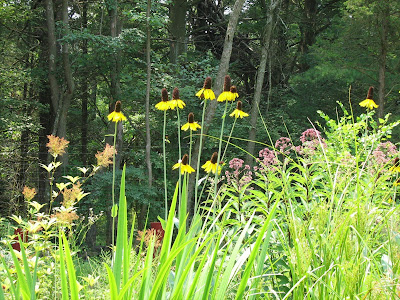
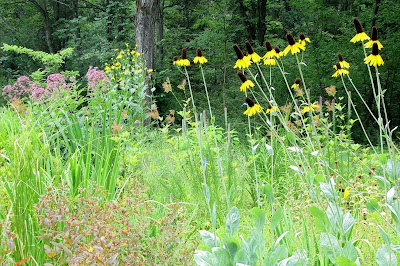
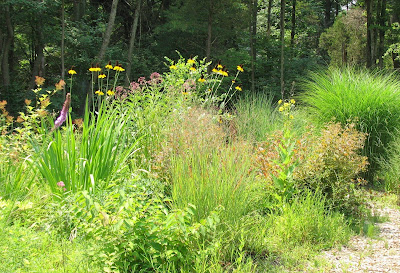
In the foreground is a very old Viburnum plicatum I cut to the ground when we moved in and had to clear about 60 cedars to open the land to light. A mistake - the viburnum had taken the form of a small tree. I wish I had kept it. It's nearing three feet, so I look forward to having it again as part of a middle layer.

The 1965 house has a wall of floor-to-ceiling windows overlooking the prairie garden.
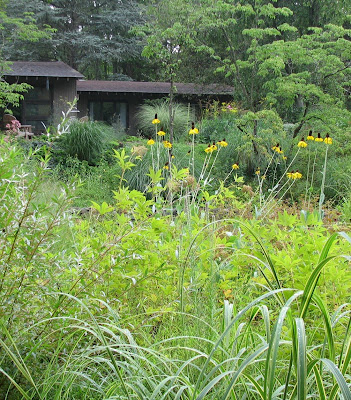
Moving clockwise ...
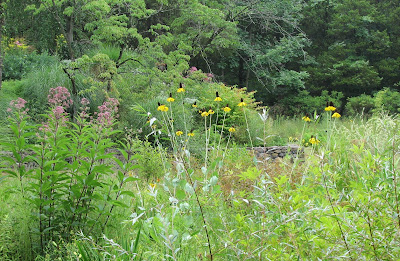
... further clockwise ...
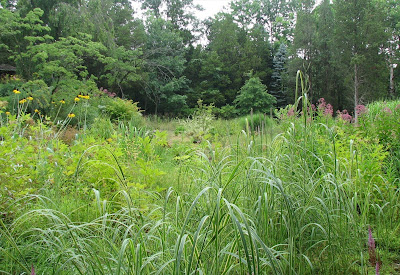
... and again ...
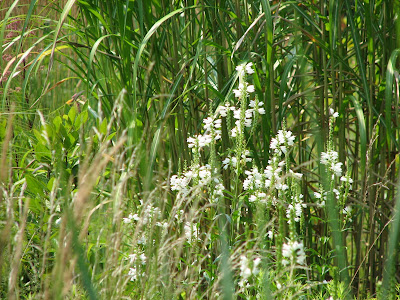
Part of a rapidly growing colony of Physostegia virginiana. This end of the garden will be mostly white and green.
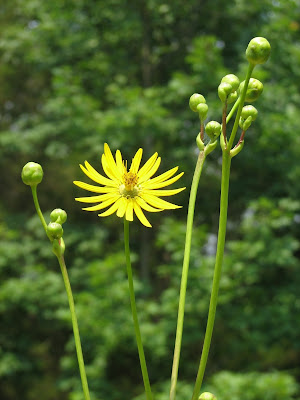
After two years, the first Prairie Dock (Silphium terebinthinaceum) to flower.
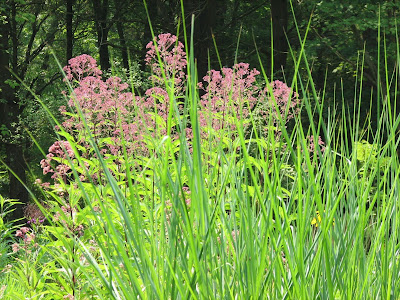
Joe Pye Weed through Panicum virgatum 'Cloud Nine' - a very popular panicum a few years back, but now hard to find in nurseries. So much clamour after "something new and improved," the old cultivars are forgotten.
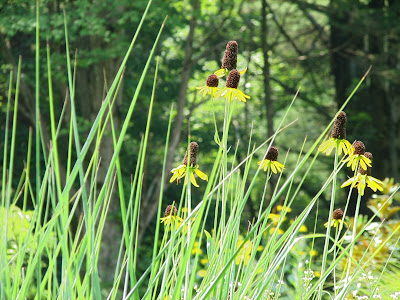
And Rudbeckia maxima with Cloud Nine.
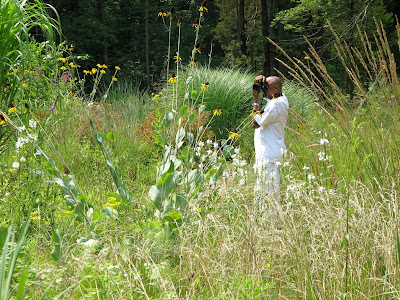
Ernst, at over 6 feet, illustrates my penchant for giant plants. I do have to put more work into the groundcover layer.
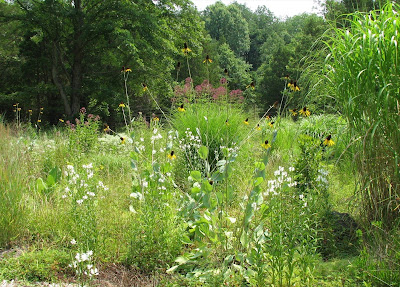
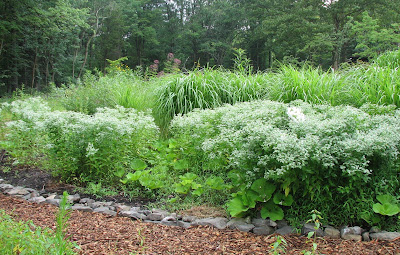
Still working on this planting of Pycnanthemum muticum, Miscanthus s. 'Silberfeder', and a hybrid Petasites japonicus. This is copied from an Oehme and Van Sweden design ("imitation is the sincerest ...")
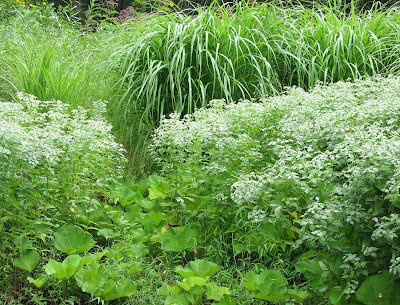
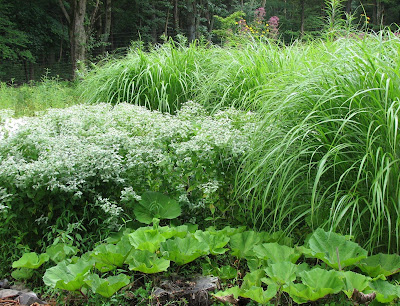
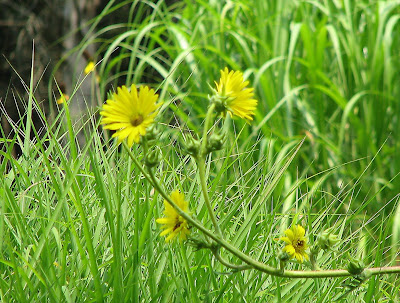
Silphium laciniatum against Miscanthus purpurescens and Miscanthus gigantius.
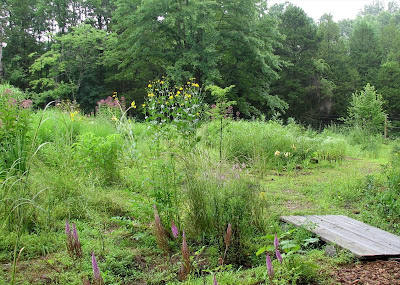
The bridge carrying the cedar chip path to the back side, where the large planting of miscanthus-pycnanthemum-petasites marks the lower end of the prairie "circle."
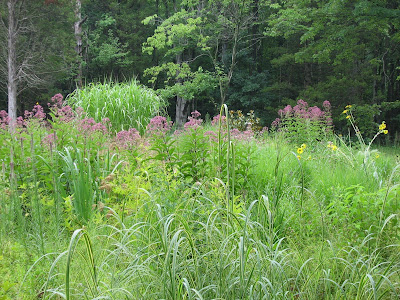
Looking across the widest part of the prairie - about 250 feet - through a foreground screen of Spartina pectinata variegata (above) and through Salix alba Britzensis (below). The ribbon curls of the spartina are a nice contract to all the verticals; I should add more (but will divide and replant since it's rather invasive). The golden glow is Filipendula foliage.
